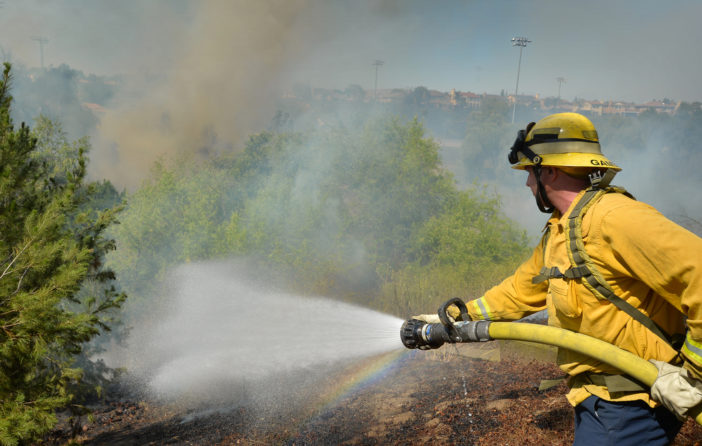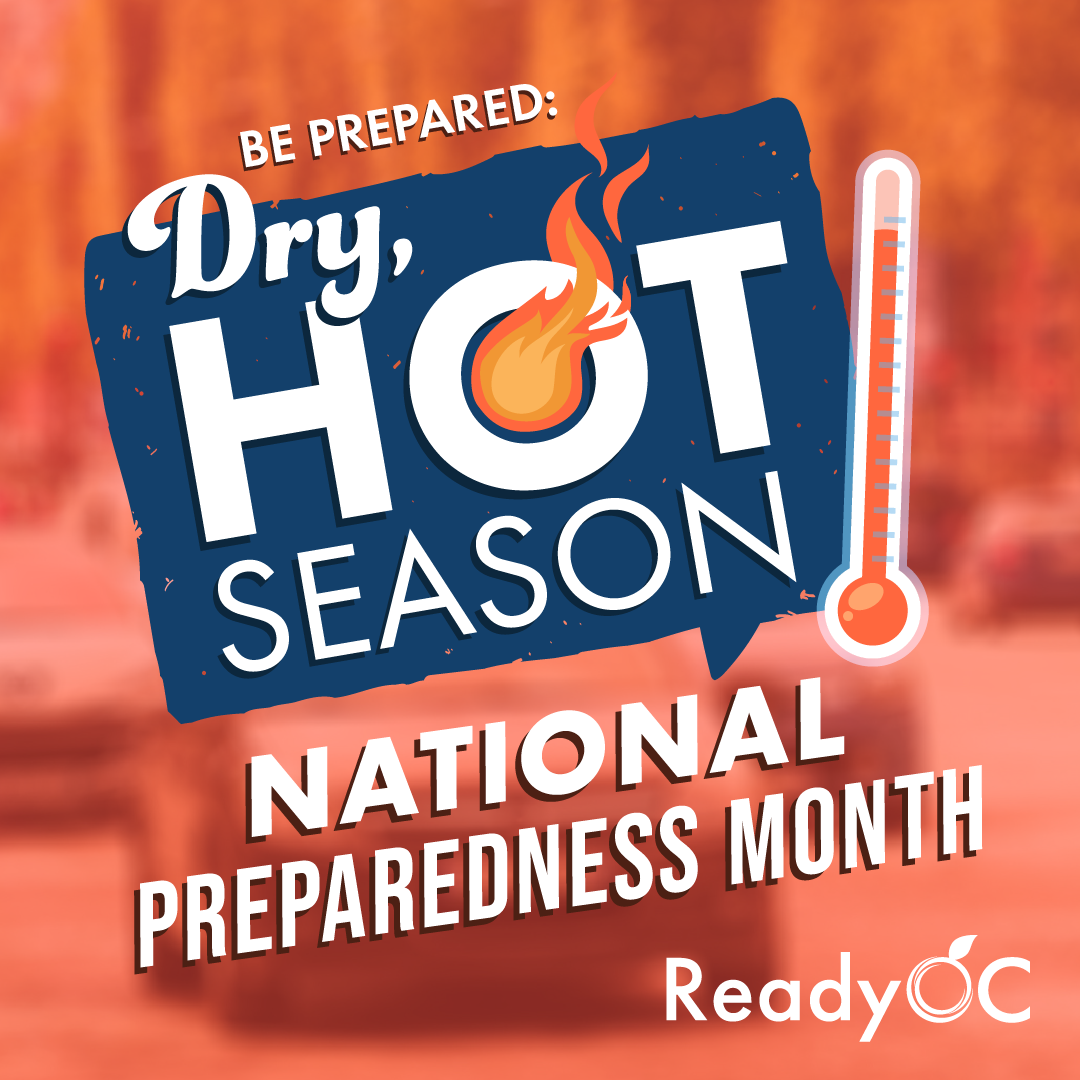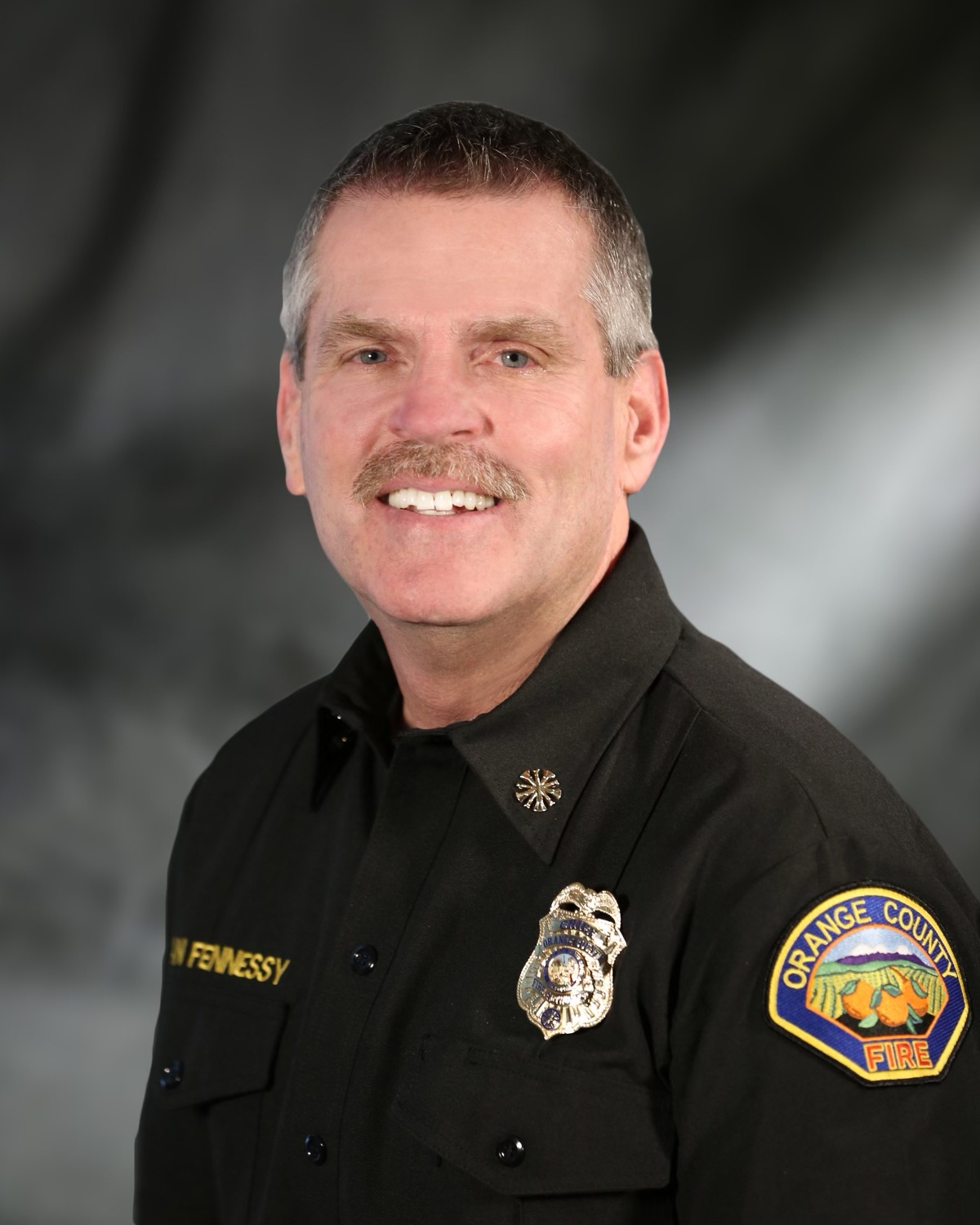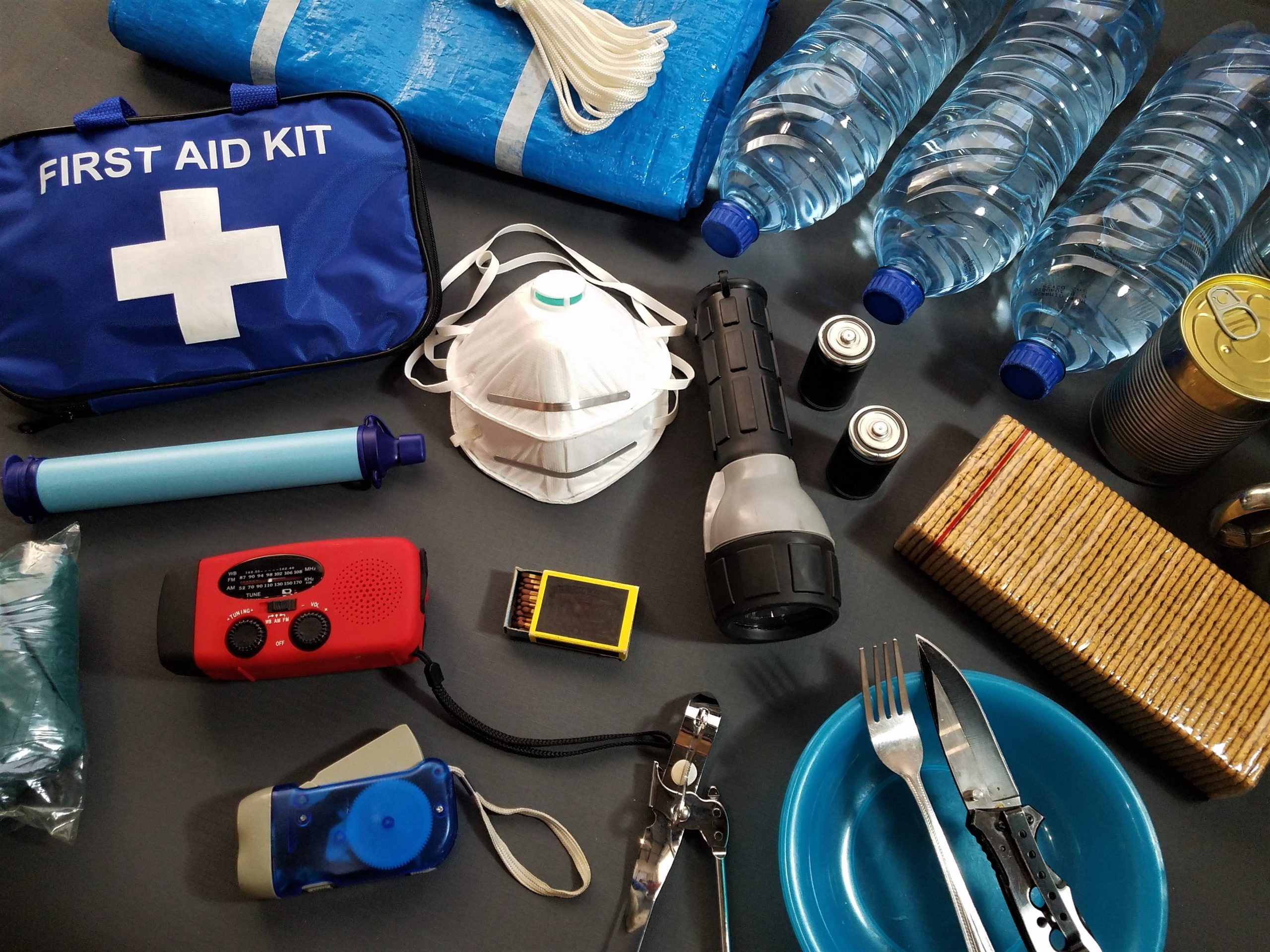Brown skies and red sunsets. Ash falling from the sky like snowflakes. Smoke traveling from California to New York. Wildfires in California have become a seasonal phenomenon that seems to grow by the year.
Drought, heat, changing weather patterns, encroachment into the so-called urban wildland interface — all these are factors have changed the fundamental nature of fires, management and suppression in California.
To help residents, groups like Ready OC, Orange County’s emergency preparedness resource, stand in the gap with vital information.
Consider:
- Since California started recording fire incidents in 1932, the 10 worst fire seasons have happened since 2000
- In 2020, more than 4.4 million acres burned
- The seven largest wildfires in California have all occurred since 2018
- This year’s still-burning Dixie Fire at 963,000 acres ranks No. 2 behind last year’s August Complex Fire
As part of National Preparedness Month and in preparation for National Fire Prevention Week, Behind the Badge connected with Fire Chief Brian Fennessy of the Orange County Fire Authority, who provided written responses to questions about wildfire and preparedness.
What are the most important things you can do to be fire aware and fire ready?
The most important first step to take is to make sure that you and your family are prepared to evacuate early in the event of a wildfire.
Put together a disaster preparedness kit with enough essential supplies to last each family member at least three days – and don’t forget about your pets! You can also take some steps to ensure that your home is ready and hardened in case a fire does approach your community. Ensure that you have adequate clearance between your home and vegetation or combustible materials, as well as making sure the exterior of the house itself is not comprised of combustible materials. Home hardening can save your home from a wildfire as it did to many homes in the most recent wildfires here in Orange County.
The OCFA offers a free home assessment program. Fire prevention staff will come out and assess your level of risk.
For more information and other resources, visit www.ocfa.org/rsg.
Watch: A view from a fire helicopter: IMG_4015
What are the most important and/or innovative things OCFA does to keep the public aware and engaged?
Here in Orange County we know how important it is to keep our communities informed through a variety of channels, especially during an emergency. One of the biggest tools we have is a program called AlertOC, which allows residents to sign up with their cities to receive alerts by phone and email about an emergency affecting a community.
We also encourage people to follow our social media accounts (@OCFireAuthority). We post fire safety and other educational material as well as incident information.

Firefighters prepare to battle fires during frequent trainings such as the one pictured at the North Net Fire Training Center in 2015.
File photo by Steven Georges/Behind the Badge
Our education team can come out personally and provide valuable instruction to groups on a variety of topics, including fire safety and disaster preparedness. Check out ocfa.org/SafetyPrograms for details.
That said, waiting to receive a warning is not prudent when you are aware that fire(s) are burning nearby. It’s everyone’s responsibility to stay alert. Turn on the local news, go outside and see if you see or smell smoke, go online, call friends and family. In short, one must take responsibility for remaining aware.
Law enforcement and the fire service will do all they can to alert communities, but residents should not wait to be told to evacuate if at all concerned.
Why is fire safety and readiness education important?
Readiness education is essential because you never know when disaster can strike. Statistics show in the event of an emergency, survival and success favor those who are prepared. This can apply to any emergency, whether it’s a residential structure fire, large wildfire, earthquakes, or even a pandemic.
When emergencies do occur, people often have a sense of panic with emotions and adrenaline levels running high – this is NOT the time to come up with a plan. We educate on fire safety and disaster preparedness year-round so by the time an emergency does occur, people are ready to implement their plan with their family.
What are the biggest misperceptions people have about wildfires?
There are three big misconceptions that people have about wildfires.
First: that fires happen to others and won’t happen to them.
Second: there is a belief that if I don’t live on a rim of a canyon or edge of open space, I’m not in danger of being impacted by fire.
Third: that wildfires are a public safety issue – fires are a community issue. Wildland fire affects everyone and everyone in the community is a stakeholder. It’s important to understand what it means to be able to “live with fire.”
Everything necessary to plan and prepare for a wildfire is available on the OCFA website. The “Ready, Set, Go” material on the site provides homeowners with all the information needed to be prepared, from home escape plan templates, to easy-to-follow checklists to ensure you and your family are prepared.
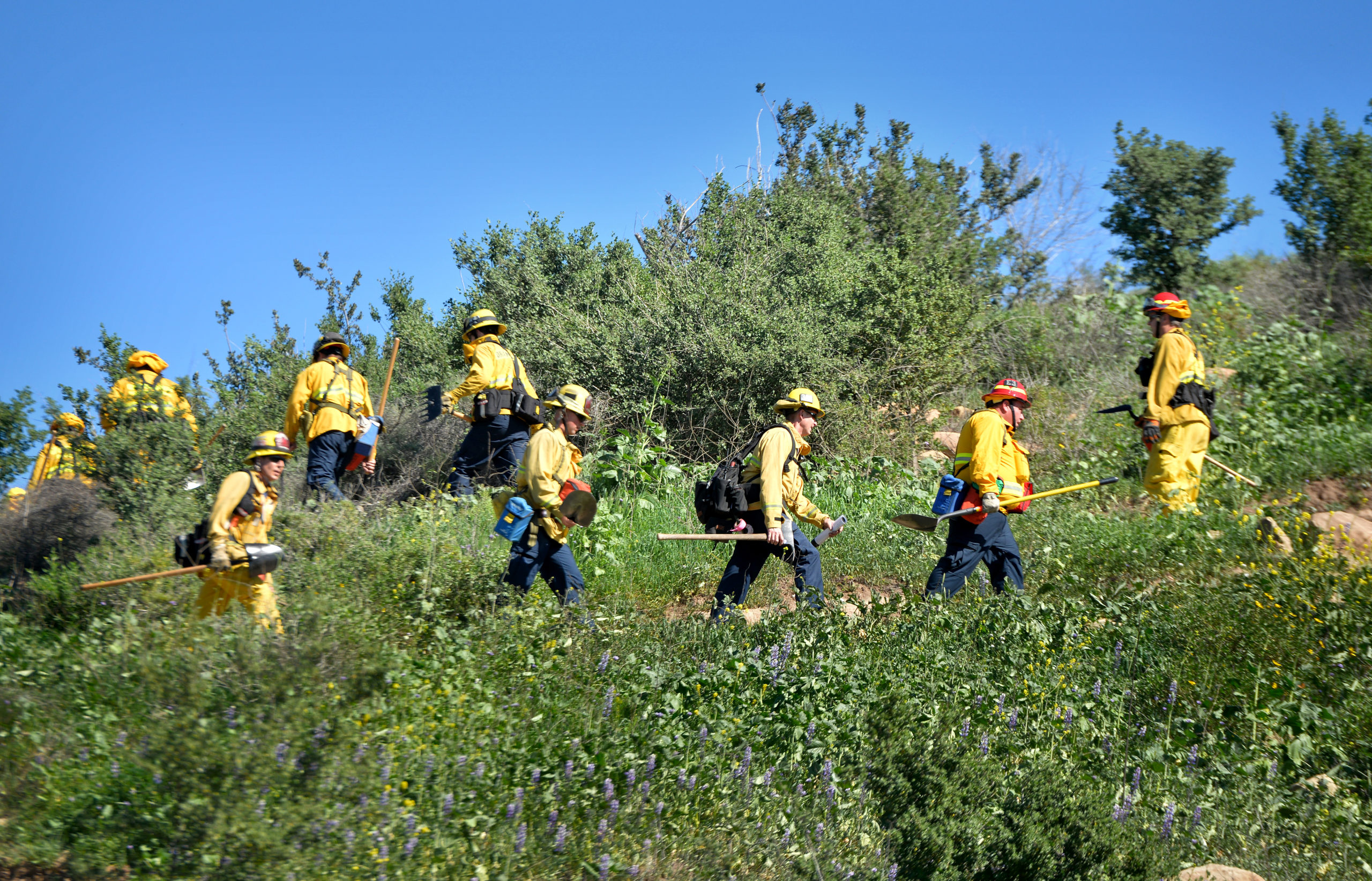
Firefighters from Orange County fire safety agencies hike up a hill with full wildfire fighting gear during a wildfire training session at Santiago Oaks Regional Park in 2015.
File photo by Steven Georges/Behind the Badge
If you had one message, what would it be?
BE PREPARED in advance! Evacuate when notified or any time you feel an evacuation may be coming. There could be natural disasters or extenuating circumstances that interfere with our ability to notify residents through the alert system so being prepared ahead of time and not waiting until the last second to evacuate could mean the difference between life and death.
One of the biggest challenges for law enforcement and the fire service is when residents do not evacuate when notified. Wildfires spread much faster than homeowners think. Once faced with the realization they must evacuate, this impacts fire and law enforcement access to where they can defend homes and businesses. If our public safety agencies have to be in life safety “rescue” mode, then we cannot proactively defend and protect property.
What resources does OC give annually to wildfires at home and statewide?
The OCFA and all OC fire agencies contribute resources all year long locally and also through the statewide mutual aid system. The statewide mutual aid system is the most robust in the world. Mutual Aid was born in California back in the 1950s and has matured over the years.
OC Fire Service fire engines, trucks, bulldozers, handcrews, aircraft, incident management team, personnel with specialized training, experience and qualifications are deployed up north now and have been for the last few months.
This year (knock on wood) although Northern California has been ravaged, Southern California has had few fires. Is that just luck, or are you doing something that has turned the tide?
Southern California has experienced a somewhat mild fire season thus far. This has allowed OCFA and other OC fire agencies to provide considerable support and resources to the large fires in Northern California. However, the month of October is historically the worst for wildfires in Southern California.
The largest loss of life and property has occurred during the month of October. We are entering the time of year when hot and dry Santa Ana winds surface. Couple this with extremely dry fuel conditions, and it can make for a very busy next few months in Southern California.
How much realistically can you do to stem wildfires?
We will never “stem” wildfires. The best we can do is work on reducing ignitions and to respond to reports of fire with what we affectionately call “speed and force.” This means rapid ground and air response with all we have.
The best way to keep from having large fires is to stop them while still small. The OCFA’s goal is to keep all wildland fires in Orange County to 10 acres or less, 90 percent of the time. We do an excellent job doing so. It’s the much smaller percentage of fires statewide that exceed the 10 acre/90 percent that turn into large fires and do the most damage and cost the most to extinguish.
In your view, how much of the current fire situation is due to climate change and how much is due to humans either through maliciousness, ignorance or laziness?
I believe the wildland fire challenge we face today and into the future has everything to do with climate change. I’ve been a wildland firefighter since 1978 and have personally seen and experienced the change in weather and fuel conditions that are causing megafires, to now be routine.
Malicious fire starts, ignorance and laziness can be factors, but generally the smaller percentage of fires when compared to accidental starts. Many years, it’s the hundreds, if not thousands, of lightning strikes we experience. Many of the fires still burning now are a result of lightning that struck back in early July.
Do you see any end to the current cycle of wildfires getting worse each year?
I don’t see an end in sight. Climate change is a reality and affects the fire service in a very real way. We can expect conditions to continue to get worse, both locally and throughout the Western U.S. The best we can do is accept it, and do what we can to prepare for it.
 Behind the Badge
Behind the Badge
